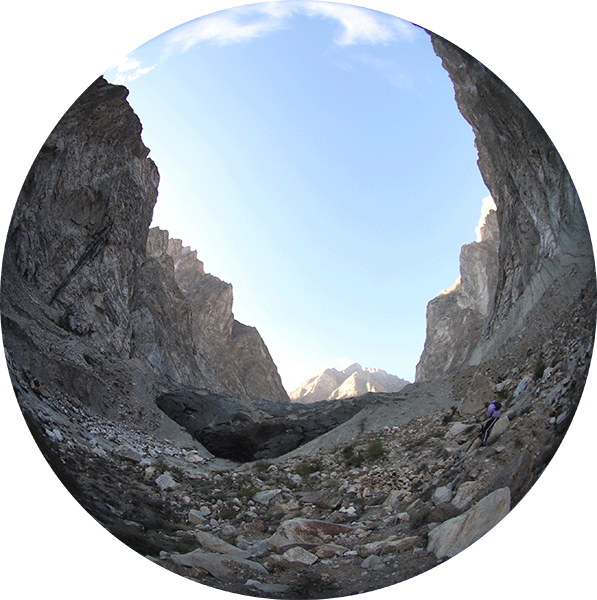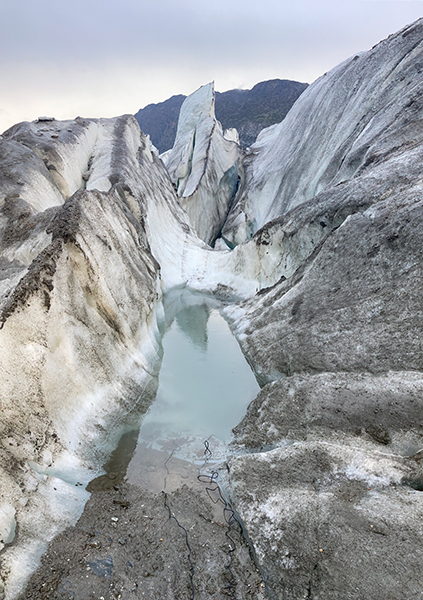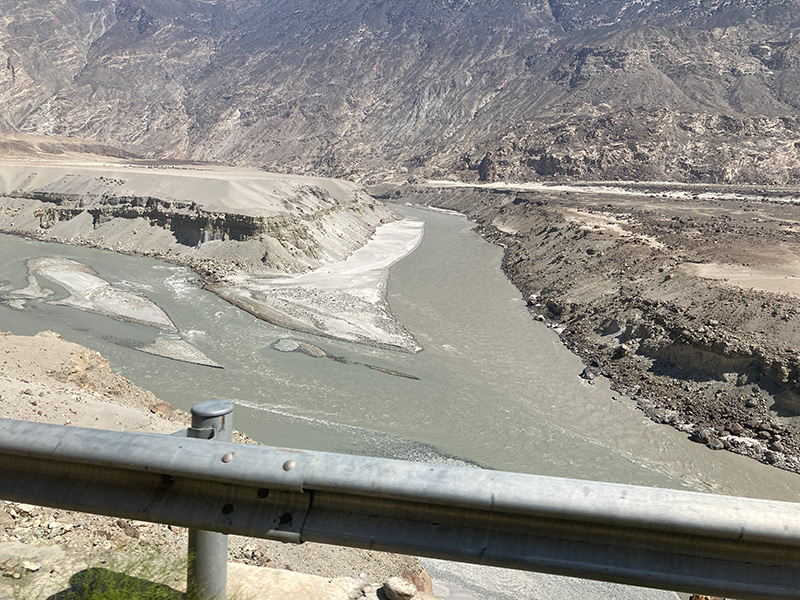
“There’s a lot we don’t understand about chemically the simplest
materials. They remain beyond our comprehension in terms of what they
actually do. So the maker is less like a scientific chemist than an
alchemist.”
‘An ecology of materials’ Tim Ingold1
My project is an experimental platform to consider the notion of the
transect, its exploration as a creative act and the role the artist in
embodied encounters and methodologies to consider the structures around
which nature is framed.
Following a transect as an artist2, can offer a
way into
understanding a
specific area, but can the methods and processes used be separated from
practices of categorization, othering, or colonial legacies toward land
and people? A transect is typically understood as a line across an area
used to measure change in a specific environment over time. The role of
the artist in studying an area in this instance, rather focusing on
specific data gathering, evolves into a different type of ‘gathering’
altogether, that pushes back on structures of categorization and
considers specific institutional research alongside local knowledge and
mythology.
I became interested in the role of the artist in following a transect
during research on a canal in the North West of England. The distinction
between transects, margins, borders and all that moves and shifts
amongst these, became a thread to follow. Matthew Gandy’s considerations
on urban transects, posits that transects can be a creative act for
artists. How might this act alter when the space cuts across urban and
rural, or shifts in scale?
Alongside Gandy, another practitioner who influenced my approach in
listening to waterways is in Annea Lockwood, who I was introduced to by
the recordist Jez riley French. Lockwood’s father was a climber and
skier, who helped inspire her interest in rivers. Lockwood’s fascination
with the ‘structural intimacy’ of a river and letting the river tell its
own story over time, is a unique method3. On this
short trip, my own
time with the different water bodies was short and clutching, often
involving scaling boulders and navigating different types of small to
large scale land disturbances. Our conversations at each site moved
around the trauma and dangers close by and stemming from the region
where GLOF incidents are unrelenting.
I found a synergy with Pak Khawateen Painting Club’s
performance-research and my own research, through the notion of the
artist-in-transect. Where Pak Khawateen Painting Club create a
speculative frame with uniforms and vast collective, embodied knowledges
shifting between science and art - I aim to create a space for -
observation-as-a-concept - using a number of methods aiming for a
non-hierarchical collection.
The photographs, videos and field recording created in this series,
consider how an embodied method of transect study might include audio,
sampling, visual studies and interviews in an attempt to create a
lateral study of a place in time.
So in this instance, what is it to follow a transect? Is it a period in
which to follow a thread, a sampling of time and space? Is it a moment
for distant observation or microscopic study? Is it purely a moment for
categorization and conceptualising of zones, linked to land and power?
Is it possible to study a transect purely by listening?
Field recordings are mediated by specific technologies and expertise,
and other specifications. As audio documentaries, they can help develop
understandings of transects from multiple view points, using resonance
and dissonance to shape space. In this project, field recordings were
made from listening moments at shear margins at different glaciers
including Passu and Shishper. Shear margins meaning in this case, an
evolving place between ice and rock. Recordings were also made walking
in the space connecting urban and rural, and at interstitial locations
on our journey including roadside infrastructure.
The listenings also include moments with individuals and researchers,
recording histories and current climate considerations. The trills of
the glacier merge with the road noise and day-to-day life in Hunza,
pollinators on lavender and conversations around the sites. The
collective audio asks the listener to consider what constitutes a
sensibility towards nature.
1 Ingold, Tim. An Ecology of Materials, 2012.
2 Gandy, Matthew. Natura Urbana: Ecological Constellations in Urban
Space, p185. 2022. MIT Press.
3 Lane, Cathay. Carlyle, Angus. Annea Lockwood Interviewed by Cathy Lane
for ‘In the Field: The Art of Field Recording. 2013, Uniform Books.




